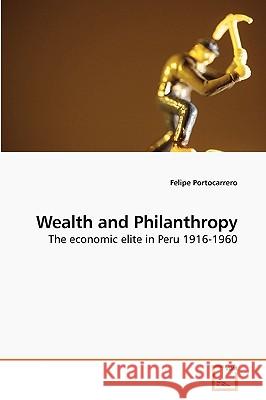Wealth and Philanthropy » książka
Wealth and Philanthropy
ISBN-13: 9783639218916 / Niemiecki / Miękka / 2010 / 384 str.
This study focuses on the genesis of Peru's 20th century economic elite, the so-called Peruvian oligarchy. It argues that it is wrong to consider this group just as a historical continuation of the colonial merchant aristocracy or the coastal plutocracy of the Guano Age. Using new historical evidence, it shows how in the growth period of post- war reconstruction in the late 19th century, nouveaux riches found profitable new investment possibilities. This elite consisted of not just limenos and provincianos (two thirds of the sample), but immigrants from Italy, Germany, Spain, France, and England (one third of the sample). Greater purchasing power encouraged elite altruism in ways ignored by social scientists. Philanthropy defines and exemplifies their values, confirms their social pre-eminence, not so much over the poor as those immediately beneath them. Both established and new elites need to show off their status and their capacity to act charitably in life and death."
This study focuses on the genesis of Perus 20th century economic elite, the so-called Peruvian oligarchy. It argues that it is wrong to consider this group just as a historical continuation of the colonial merchant aristocracy or the coastal plutocracy of the Guano Age. Using new historical evidence, it shows how in the growth period of post- war reconstruction in the late 19th century, nouveaux riches found profitable new investment possibilities. This elite consisted of not just limeños and provincianos (two thirds of the sample), but immigrants from Italy, Germany, Spain, France, and England (one third of the sample). Greater purchasing power encouraged elite altruism in ways ignored by social scientists. Philanthropy defines and exemplifies their values, confirms their social pre-eminence, not so much over the poor as those immediately beneath them. Both established and new elites need to show off their status and their capacity to act charitably in life and death.











